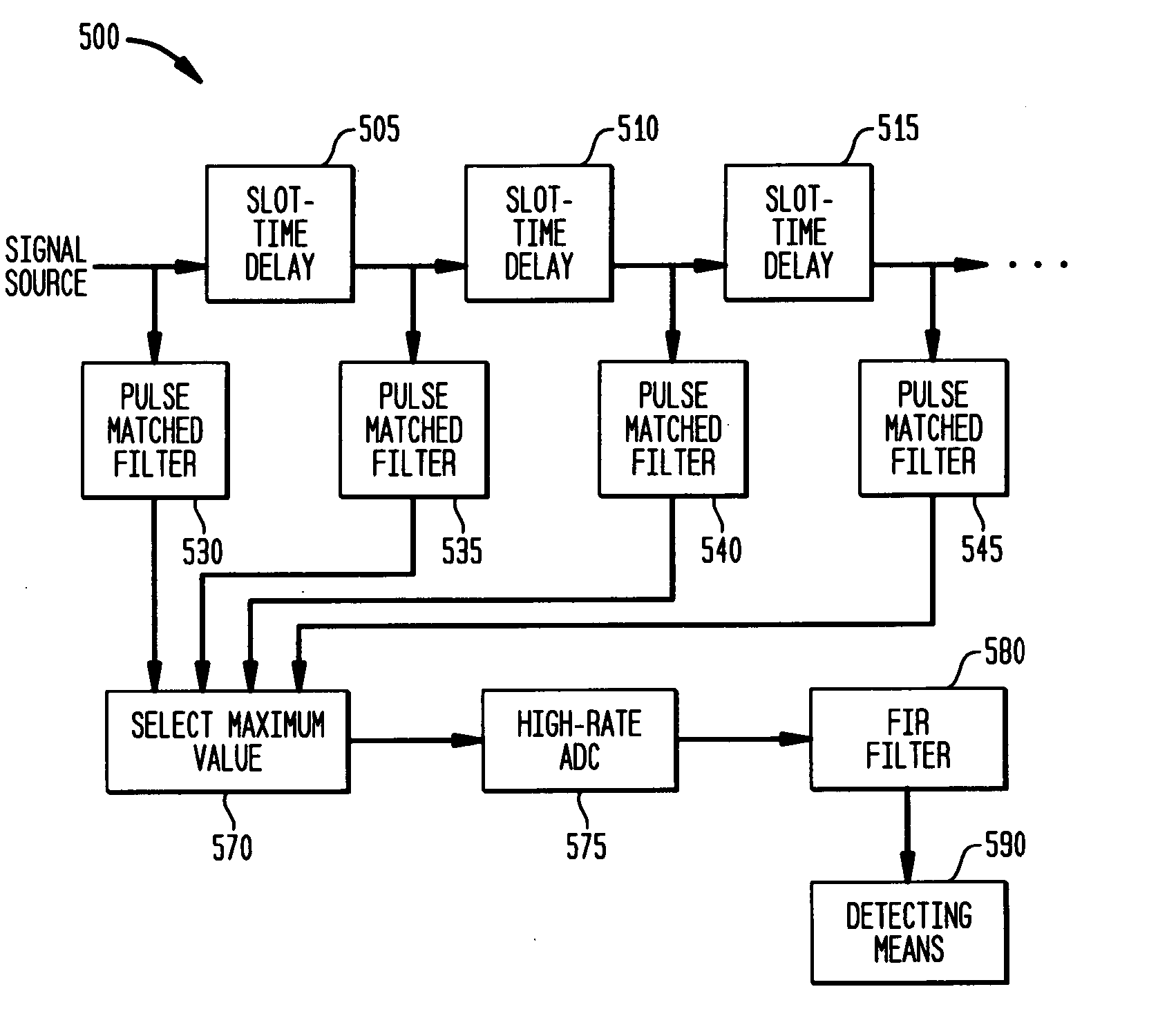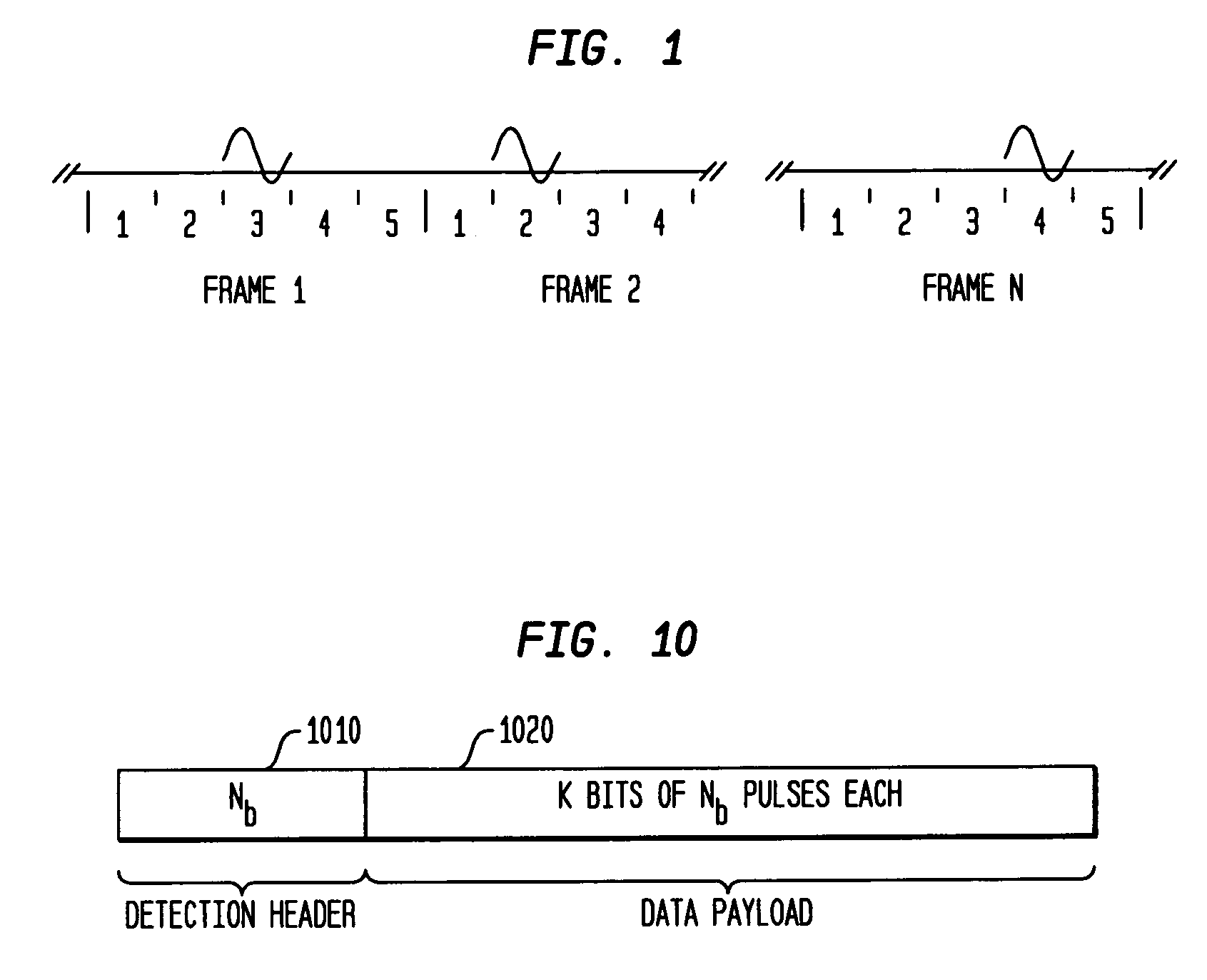Detector for time-hopped impulse radio
a technology of impulse radio and transmitter, which is applied in the direction of transmission, electrical equipment, etc., can solve the problems of imposing a strict limit on the number of information bits that can be sent, and the use of radio links is not very useful, so as to limit the overall information rate of the link and low rate
- Summary
- Abstract
- Description
- Claims
- Application Information
AI Technical Summary
Benefits of technology
Problems solved by technology
Method used
Image
Examples
example and conclusions
III. EXAMPLE AND CONCLUSIONS
[0073] In a burst mode communications system, the intended receiver must detect the burst on the basis of a detection preamble / header 1010 (FIG. 10), and the remainder of the burst must consist of a data payload 1020. The structure of the burst is depicted in FIG. 10. The hostile detector, on the other hand, can use the entire burst for detection. This means that friendly receiver detects with N=Np pulses, while hostile uses (Np+K Nb), where K is the number of bits in the message portion of the burst. This limits the size of the payload relative to the header. In the last section we noted that the hostile detector has a disadvantage of about N Ep / N0=6.1 dB with respect to the friendly receiver, for a fixed burst size and at the operating SNR level derived in Section I. This means that the hostile detector can approximate the detection performance of the friendly if it sees roughly four times as many frames. Thus the hostile detection performance is only w...
PUM
 Login to View More
Login to View More Abstract
Description
Claims
Application Information
 Login to View More
Login to View More - R&D
- Intellectual Property
- Life Sciences
- Materials
- Tech Scout
- Unparalleled Data Quality
- Higher Quality Content
- 60% Fewer Hallucinations
Browse by: Latest US Patents, China's latest patents, Technical Efficacy Thesaurus, Application Domain, Technology Topic, Popular Technical Reports.
© 2025 PatSnap. All rights reserved.Legal|Privacy policy|Modern Slavery Act Transparency Statement|Sitemap|About US| Contact US: help@patsnap.com



